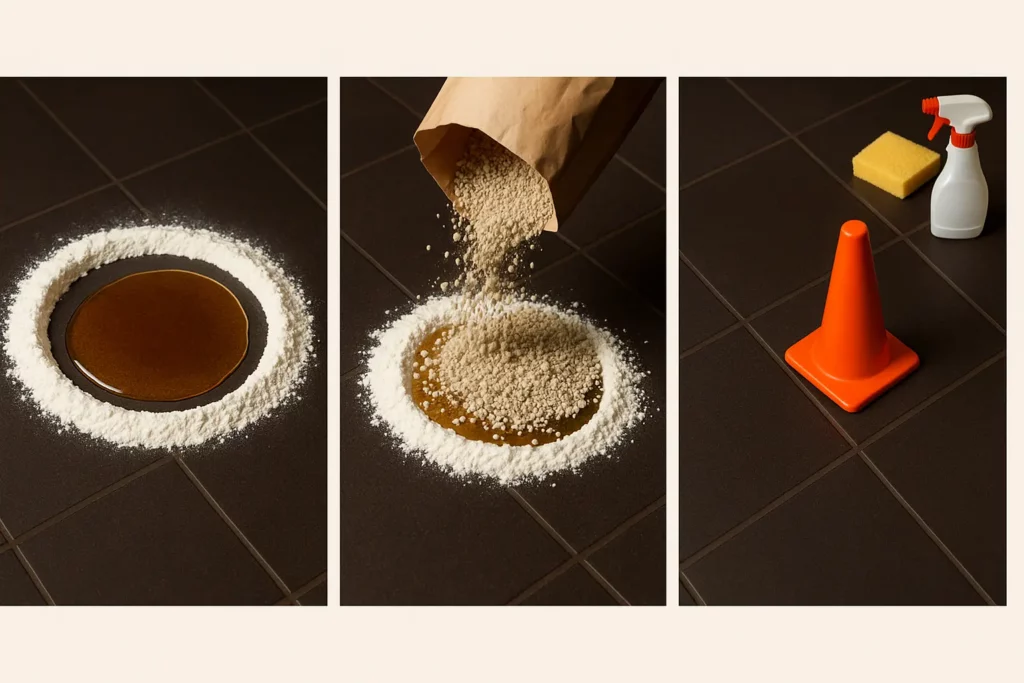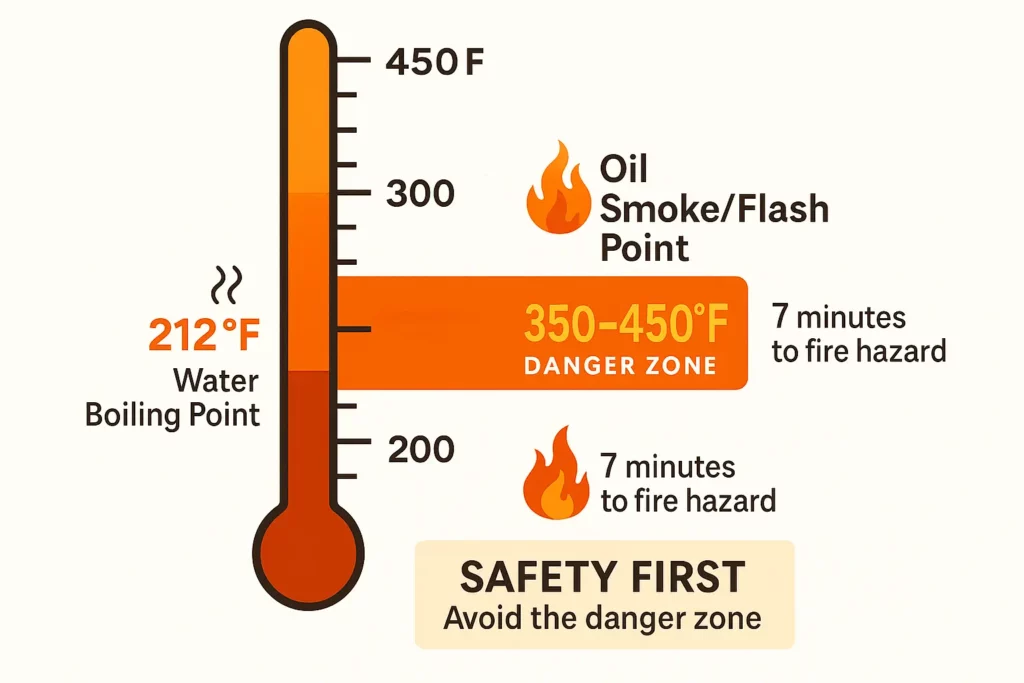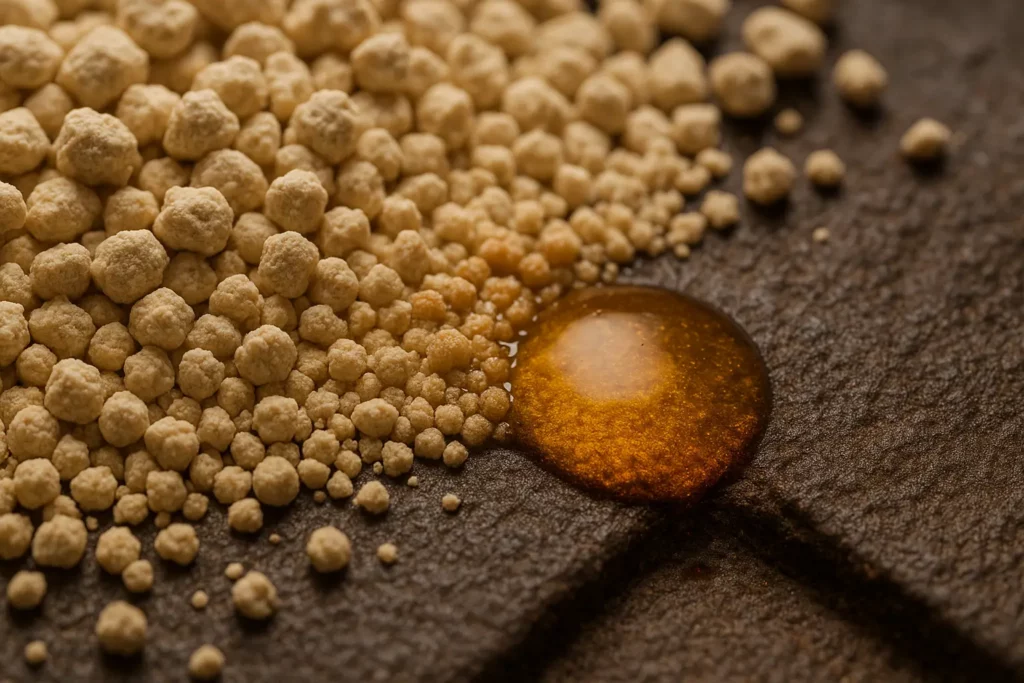Table of Contents
Why Every Second Counts When Oil Hits the Floor
A gallon of hot vegetable oil can fan out to cover more than 15 sq ft in seconds, creating a slip coefficient far below the 0.4 safety threshold cited in food service injury studies. OSHA case files show workers sustaining second and third degree burns from 350°F oil almost instantly on contact, while AmTrust’s 2024 Restaurant Risk Report tags burns and falls as two of the costliest claim categories in kitchens. amtrustfinancial.com The faster you contain, the fewer workers’ comp dollars and downtime minutes you bleed.
Pantry Barricade: Flour & Baking Soda
Grab a two pound bag of all purpose flour (or baking soda) and pour a continuous 2 inch berm around the puddle’s edge. Flour’s starches cling to oil, thickening it into a paste that stops lateral spread and buys precious cooling time; an old “line cook hack” repeatedly endorsed in service forums and pro tips. Baking soda works too and adds the bonus of mild fire suppression. Stand clear until spatter subsides.

Cool Down & Lift Off: Cat Litter or Sawdust
Once the oil drops below 150°F (about 10 minutes in a flour corral), blanket the site with unscented clay cat litter or clean sawdust; exactly what industrial haz mat teams use for hydrocarbons. Capillary action pulls residual oil into the absorbent; a stiff bristle deck brush speeds uptake without spreading slicks. Sweep into a metal bin lined with a high temperature bag and label “Used Fryer Oil Absorbent” for compliant disposal under EPA used oil rules.
Disposal & Compliance
Bagged absorbent containing cooking oil is solid waste, not hazardous, but still subject to local landfill bans in several states; check hauler contracts or partner with a rendering company that recycles fryer oil into bio diesel. Document the spill in your ServSafe log within 24 hours to show “active managerial control,” a key phrase regulators look for during inspections.
Injury & Liability Math
OSHA’s average burn claim payout tops $4,300, but severe slips linked to oil contamination routinely crest $10,000 and keep team members off the schedule for 265 days, according to AmTrust analytics. Add potential guest lawsuits and the true cost can eclipse a month’s profit. A two minute flour barricade is the highest ROI move you can make.

Prevent the Next Spill
- Filter fryer oil on schedule; over used oil foams and overflows at lower fill lines.
- Install anti slip mats rated for grease zones and clean with degreaser nightly.
- Mount a wall thermometer near the fry station reminding staff that third degree burns begin around 155°F water and occur even faster in hotter oil.
- Keep a 6 quart cambro of flour and a 10 lb box of baking soda on a labeled “Spill Cart” for grab and go response.
Quick Reference Absorbent Guide
| Material | Pantry availability | Absorption speed | Sweep up ease | Fire suppress? |
|---|---|---|---|---|
| Flour | Always on hand | Fast | Medium (clumps) | No |
| Baking soda | Often stocked | Fast | Easy | Yes |
| Clay cat litter | Cheap bulk | Moderate | Easy | No |
| Sawdust | Woodshop waste | Moderate | Medium | No |
Wrap Up & Staff Talking Points
Oil on tile doesn’t have to shut down service. Shout “spill,” barricade with flour, cool, absorb, sweep, log. Review the drill at preshift; post the QR code to this guide on the fry station wall. Saving one worker from a burn or fall shields morale, payroll, and profitability.










